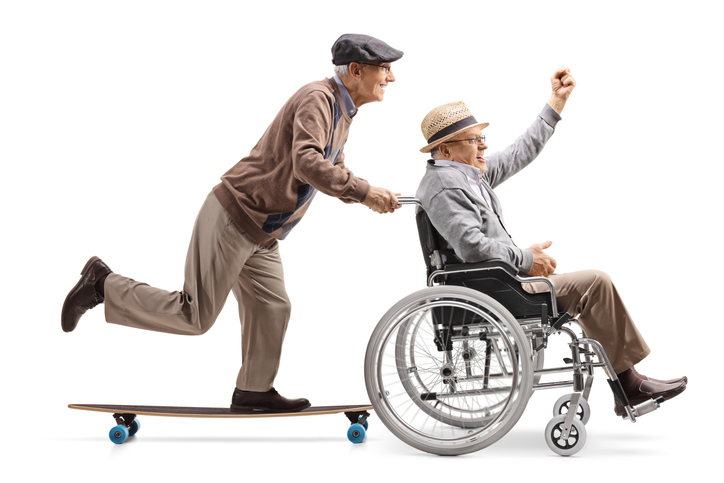If you have a disability or limited mobility, it’s just as important to be as physically active as possible. Here are some tips and benefits on how to stay active if you have limited mobility.
The recommended activity requirements for those with limited mobility is the same for all persons. The CDC advises doing both aerobic and strengthening exercises for optimal health. At least 2.5 hours weekly of moderate intensity aerobic activity is needed and can be broken up into 30-minute sessions, 5 times weekly. Muscle strengthening exercises that involve all major muscle groups should be performed 2 days weekly.
If you have a disability or limited mobility, it’s just as important to be as physically active as possible. Here are some tips and benefits on how to stay active if you have limited mobility.
The Benefits Are Considerable
The exhilaration that one feels after an exercise routine is unparalleled. This is in part due to the many mental and physical benefits you will gain such as:

- Cardiovascular Health
Regular exercise helps to maintain a healthy body weight which in turn can normalize blood pressure, result in healthy cholesterol levels and stabilize blood sugar levels. This in effect keeps the heart in optimal working order and can result in the prevention of serious cardiovascular events such as heart attack and stroke.
- Stronger Muscles and Bones
Strength training exercises can result in greater muscle mass and increased bone density. This will improve balance and decrease incidence of falls. And with greater bone density in the case of a fall, there is a lesser likelihood of sustaining a fracture or break.
- Improved Mental Clarity and Mood
Secretion of neurotransmitters reduce the perception of pain and create that "feel good" feeling. They also reduce the feeling of being stressed and can increase concentration and focus.
How Do I Get Started?
Consult Your Physician 
Before embarking on any new exercise routine, your physician should be consulted. Depending on the level of immobility, it may be decided that oversight by a physical therapist or a trained exercise professional is needed.
Start Slow
Gradually increase your activity level to get up to the suggested 2.5 hours weekly. Do as much as you can handle and aim to increase your workout sessions in intensity and duration little by little as you build your stamina.
Stay Safe
You should either work out with a friend, a trained professional, or exercise in a public area where you have access to assistance if needed.
Aerobic Activities That Can Be Performed While Seated or In a Wheelchair

Aerobic Exercise is defined as brisk exercise that promotes the circulation of blood throughout the body and results in an increased respiratory rate.
Common forms of low impact aerobic exercise include walking, bicycling, swimming etc. Even if you are confined to a wheelchair, aerobic exercise is possible. Some seated exercises that HUR Health and Fitness Equipment suggests that you might try would be:
- Chest squeeze
- While holding a small exercise ball or simple rubber ball at chest level, contract the muscles of the chest wall.
- While squeezing the ball tightly, slowly straighten your arms out until elbows are almost straight.
- Maintain squeezing pressure on the ball the entire rep. Repeat this as tolerated.
- Tummy Twist
- Sit up straight and engage your abdominal muscles.
- Hold your arms out straight in front of your body.
- Rotate your upper body as far as you can to the left while keeping your abs tightened.
- Slowly, return back to center and then turn slowly to the right.
- Knee Lifts
- Sitting straight up in chair and with feet planted on the ground, slowly lift your leg with knee bent in a marching position.
- Lift as high as you can tolerate and then slowly return to the ground.
- Repeat on other side. You can increase the intensity by pausing your leg at the top of the lift motion and holding for a few seconds.
Other exercises that can be performed while sitting or in wheelchair would be using lightweight resistance bands, secured to a door or under your chair, and then performing resistance exercises such as chest presses. For strengthening, you could use lightweight hand weights or even soup cans to perform bicep curls or shoulder raises.
Remember, focus on what you can do. Take your time and talk to your doctor, rehabilitation specialist or local fitness professional.
It is never too late to start on the path to better an improved quality of life. Contact us if you have question or in need of rehabilitation services.

